Abstract
The distribution of antigen and antibody in radial double diffusion systems was studied by means of materials labelled with 131I or 14C. These studies showed that, once a precipitate begins to form, the assumption that antigen and antibody obey the laws of free diffusion is invalid. They also showed that, in the systems used, no antigen and very little antibody diffused past the zone of visible precipitation.
It was found that accurate estimates of the diffusion constants of antigens could be obtained by allowing antigen and antibody to diffuse from troughs set at right angles and by measuring the angle of the precipitin line. Examples of the use of this method, and a theoretical treatment are given.
An alternative method for estimating the size of antigens is to use the `molecular sieve' properties of gelatin gels, which are sharply graded with the concentration of the gel.
Full text
PDF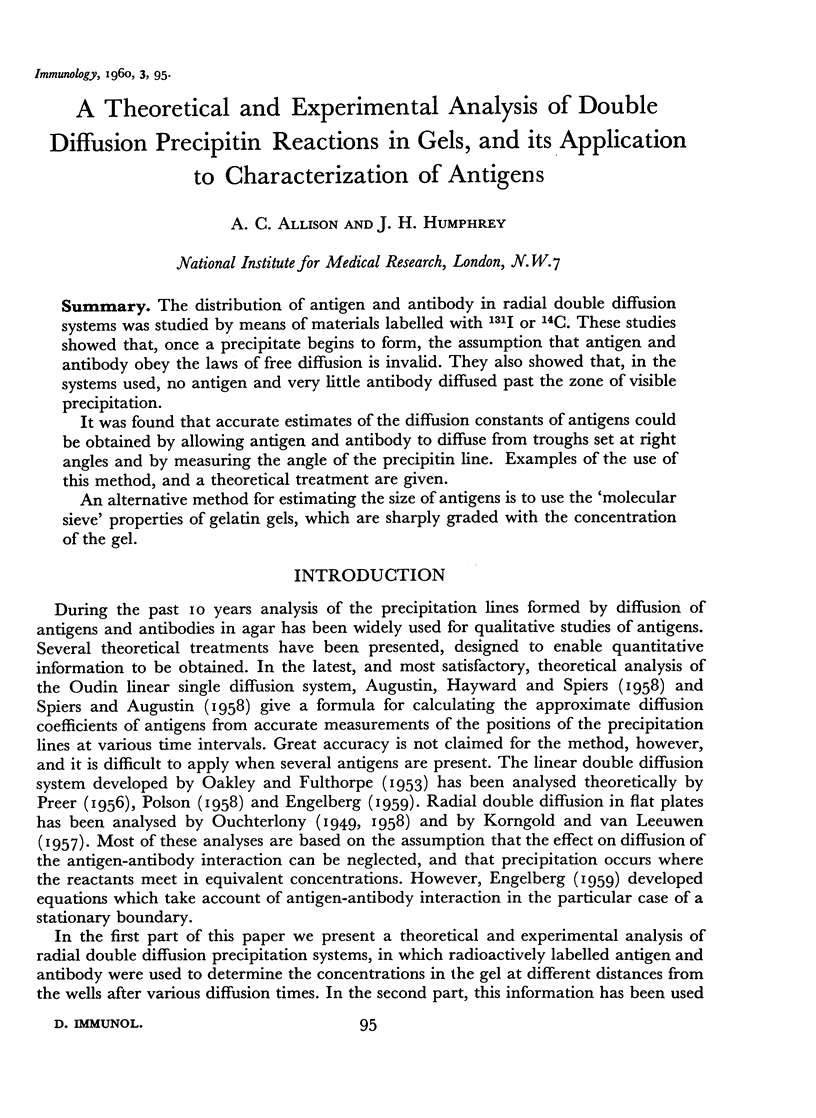
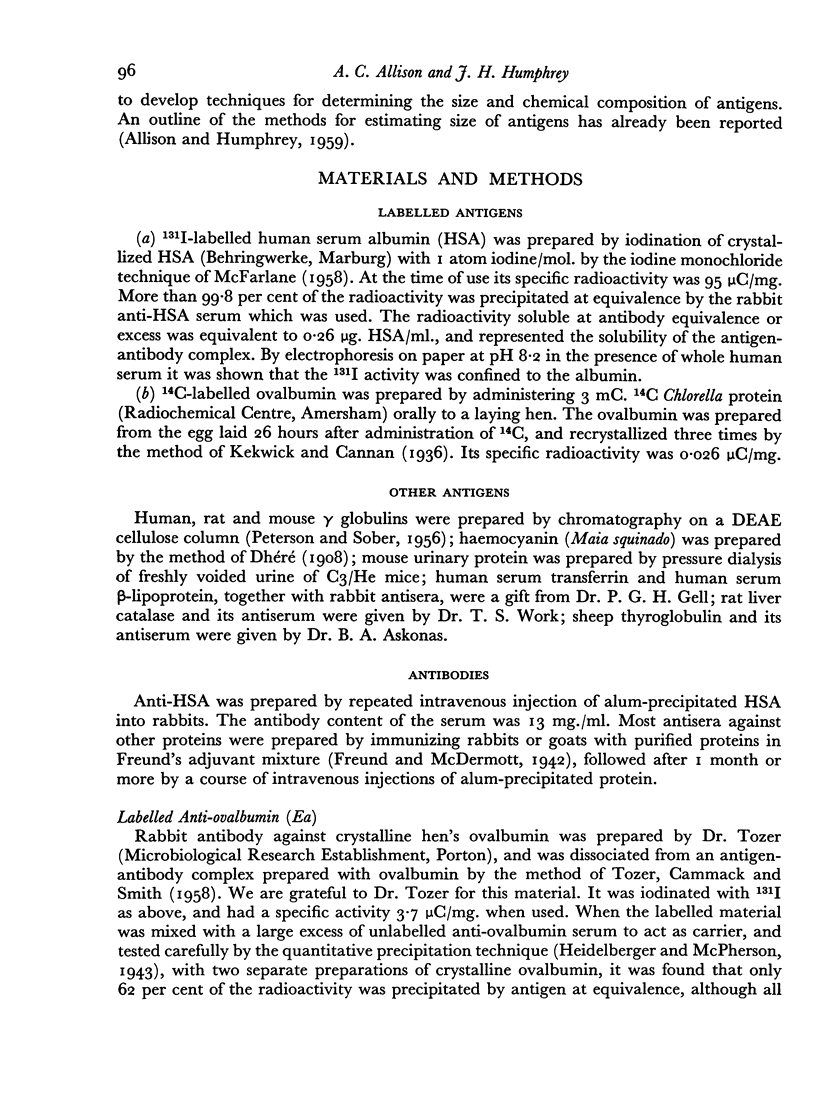
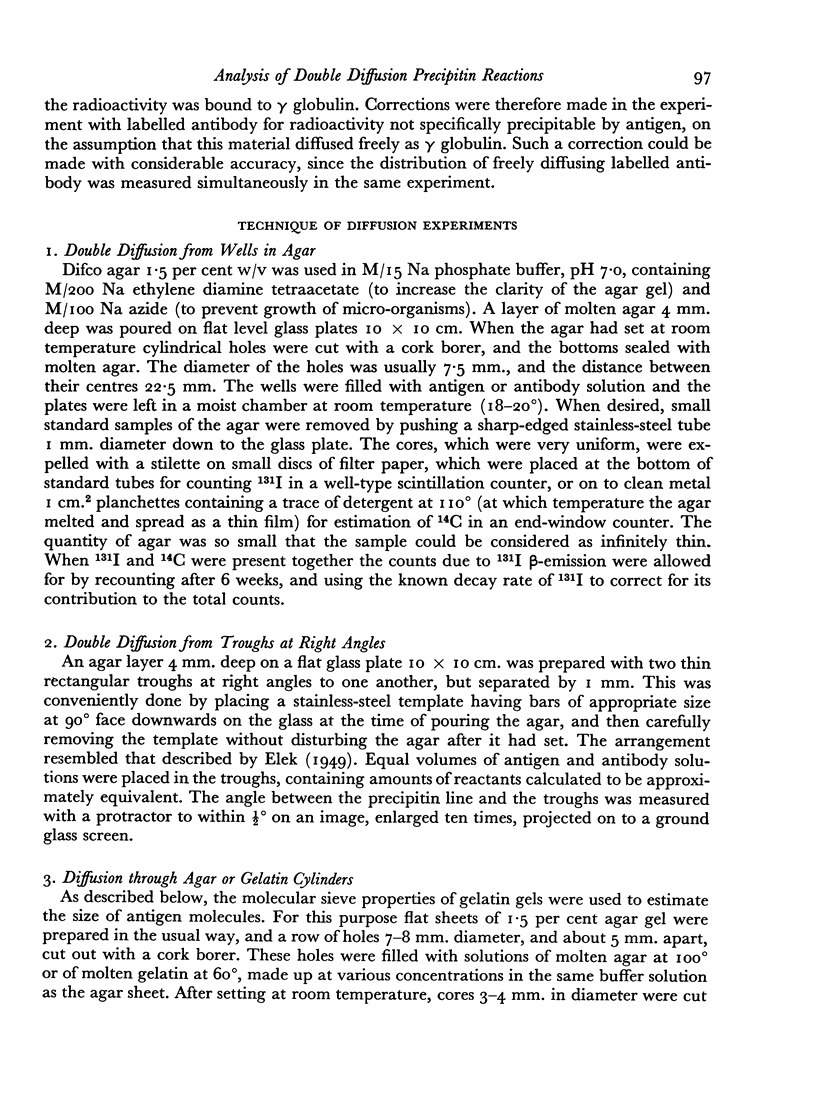
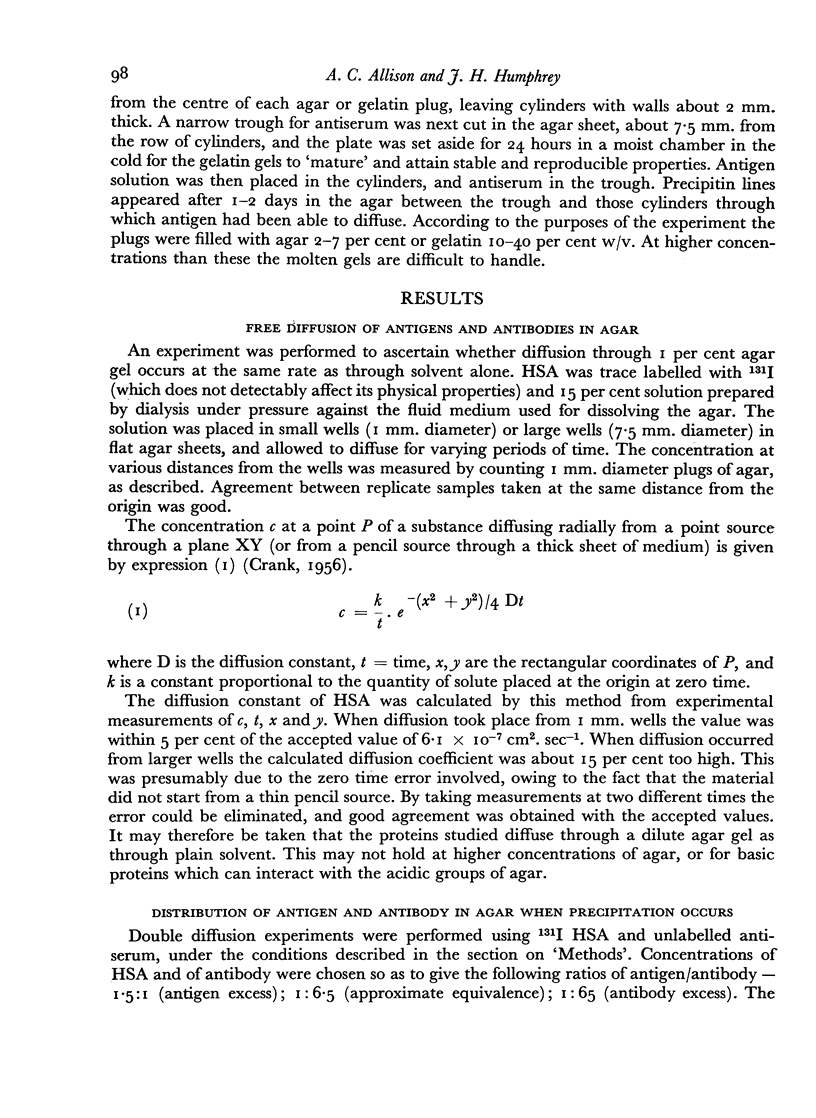

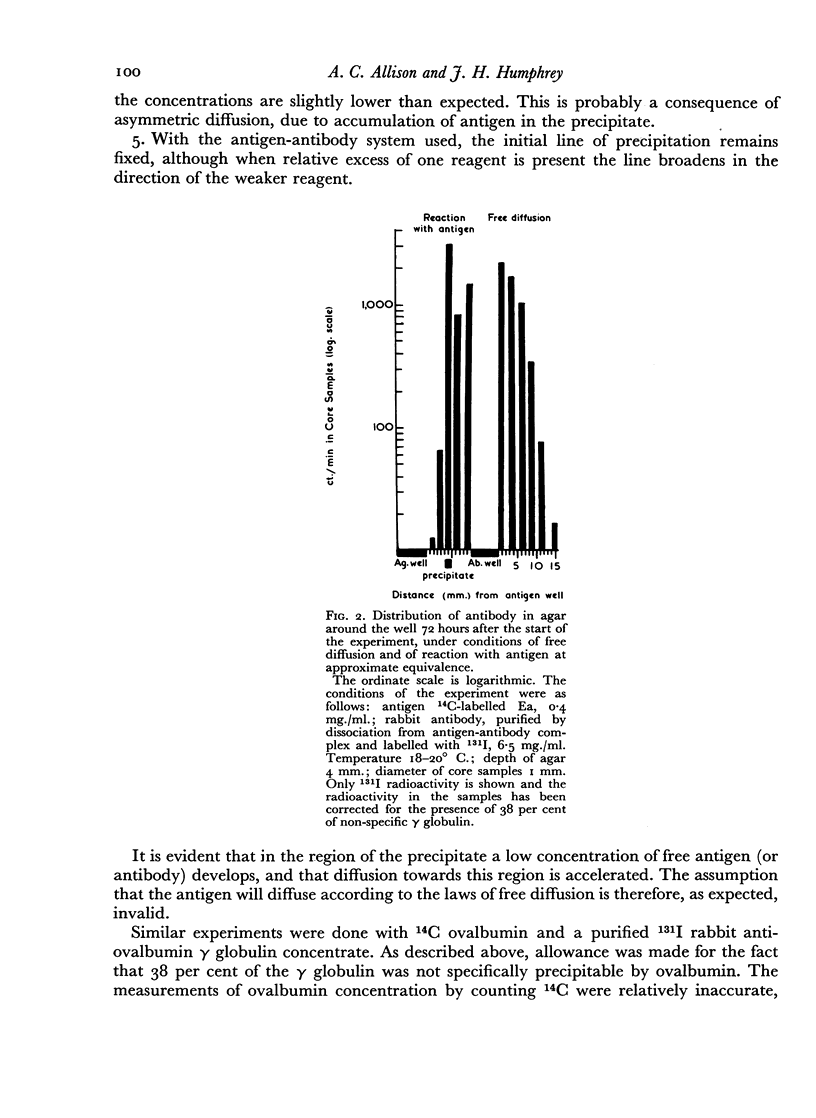
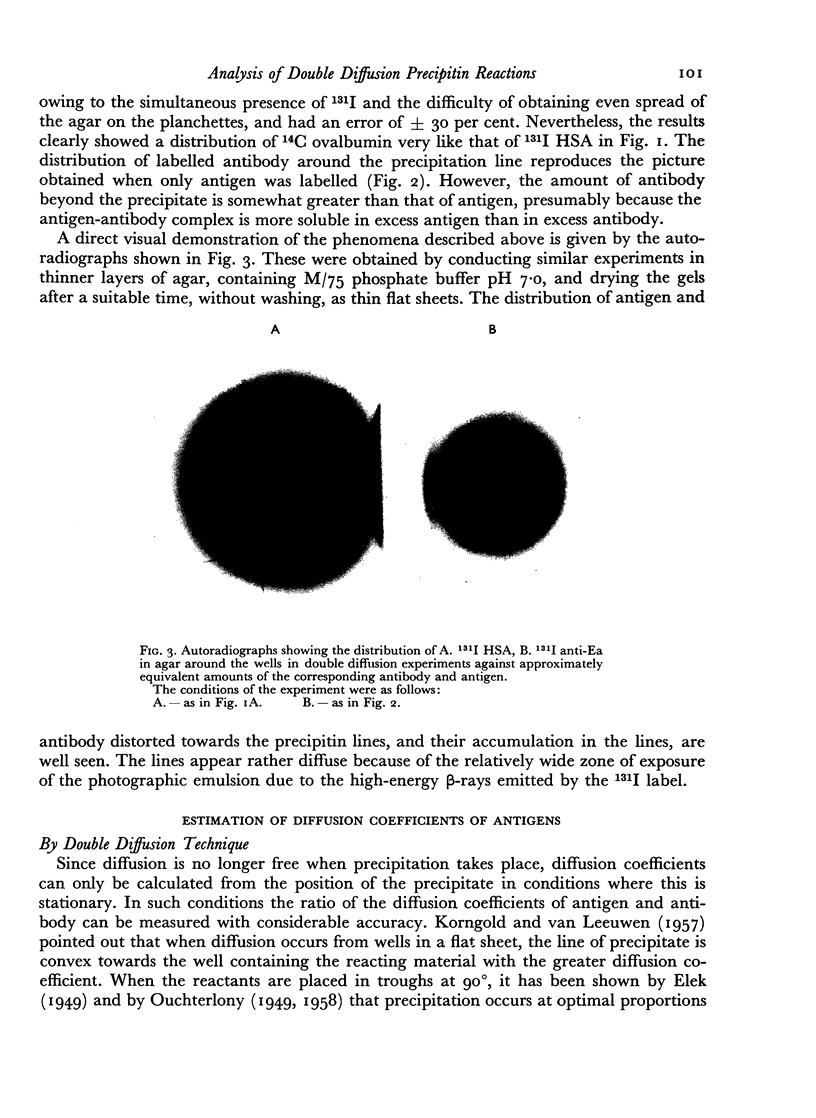
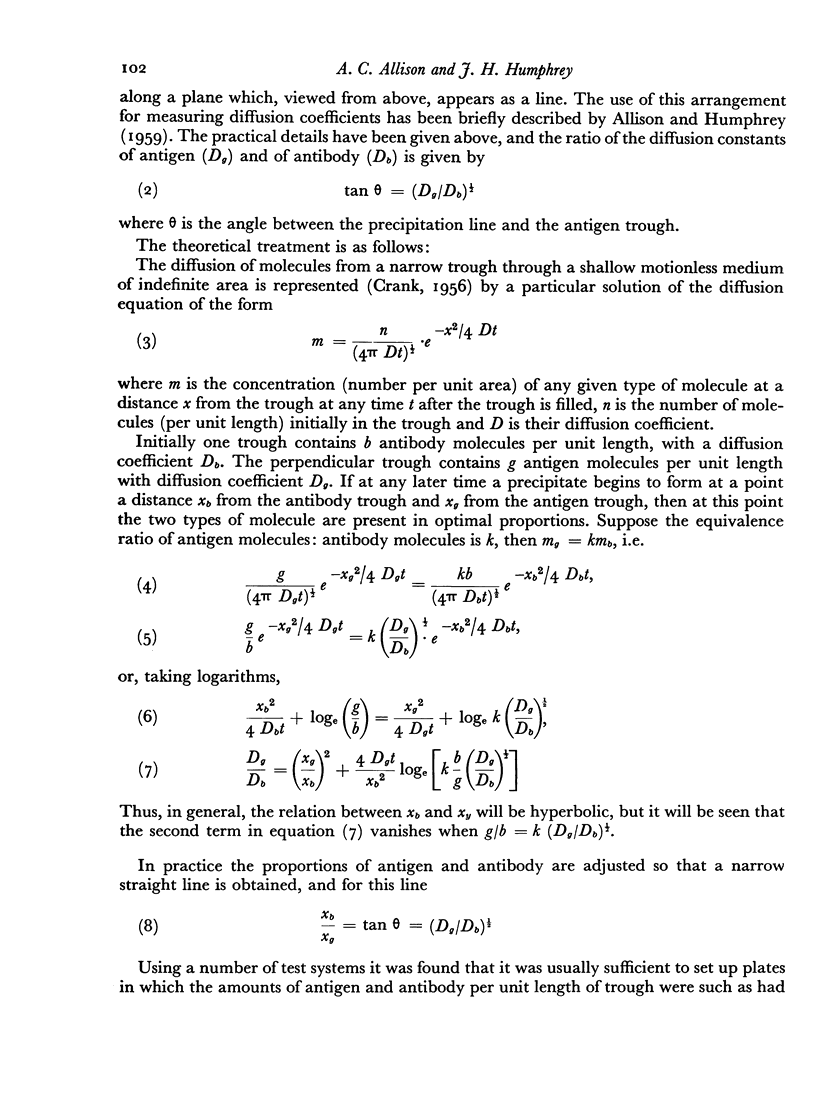
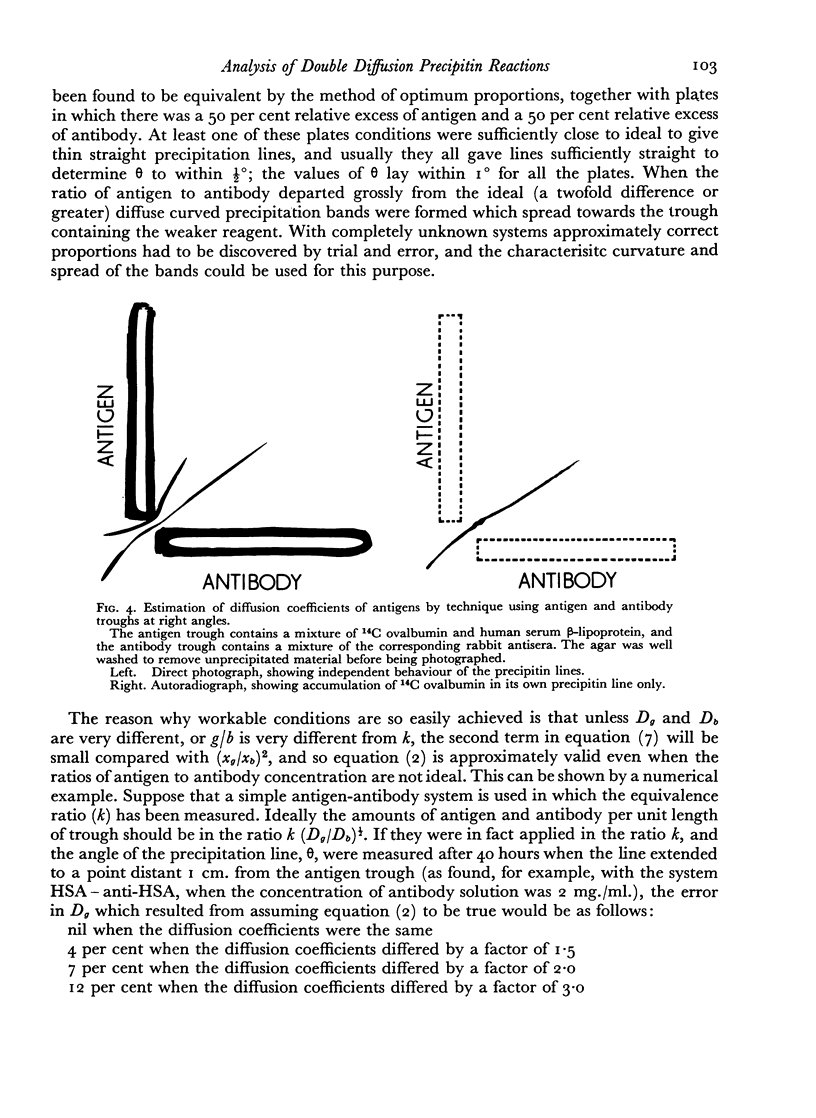
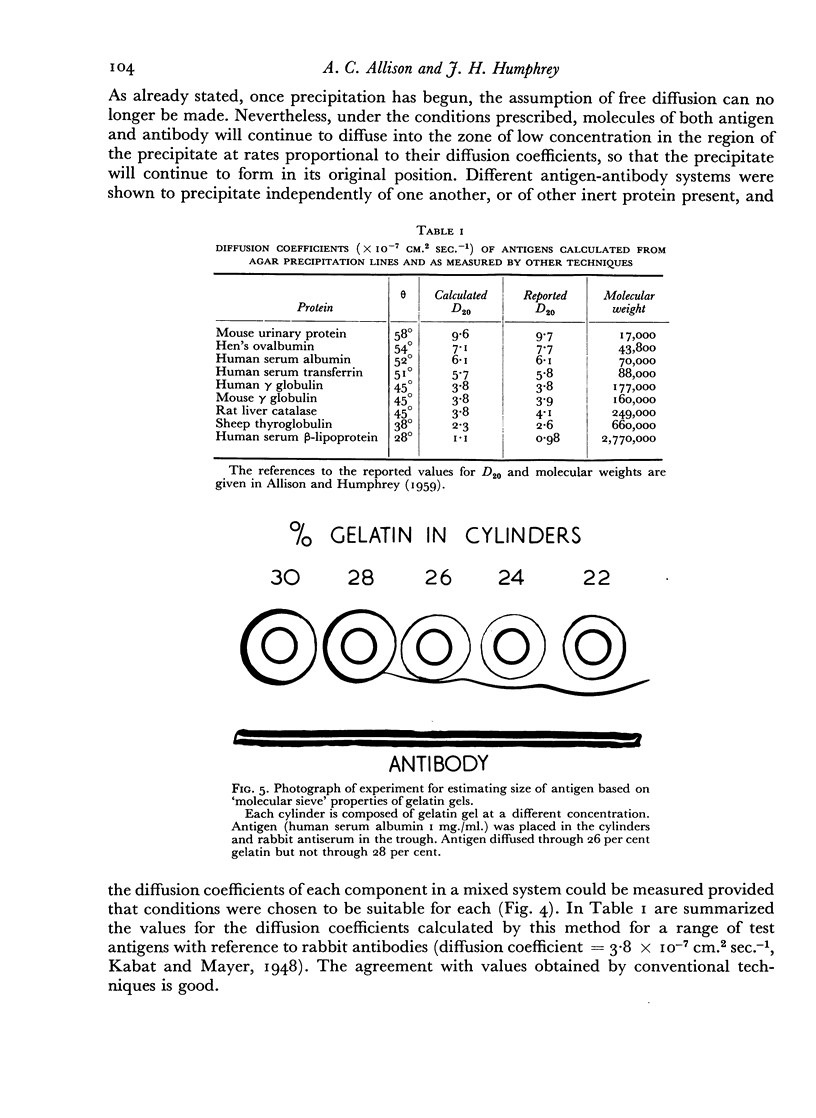
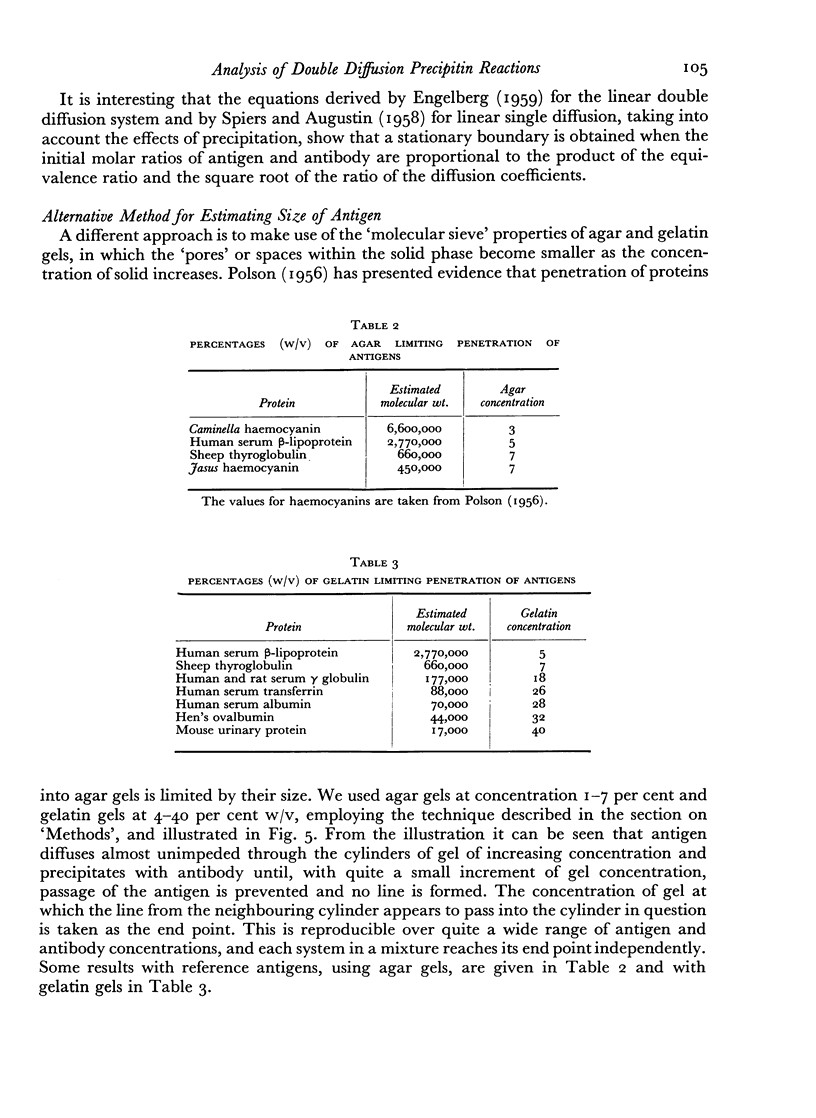
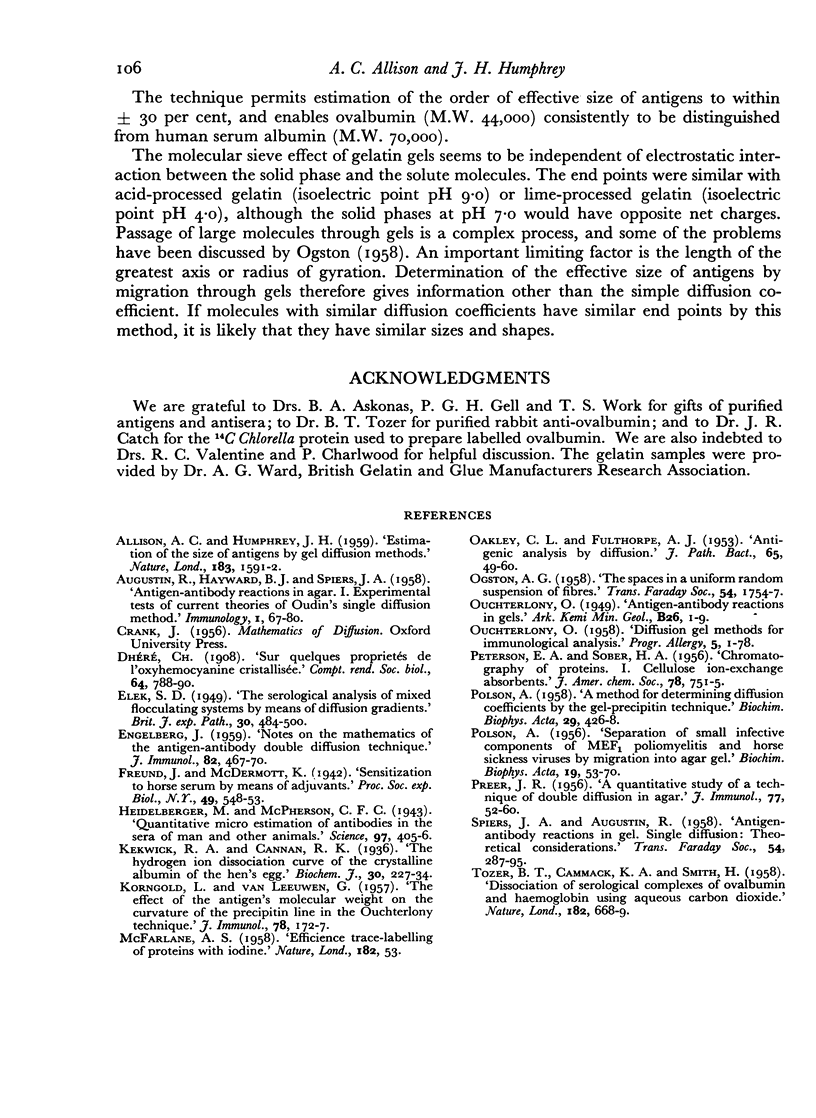
Images in this article
Selected References
These references are in PubMed. This may not be the complete list of references from this article.
- ENGELBERG J. Notes on the mathematics of the antigen-antibody double diffusion technique. J Immunol. 1959 May;82(5):467–470. [PubMed] [Google Scholar]
- KORNGOLD L., VAN LEEUWEN G. The effect of the antigen's molecular weight on the curvature of the precipitin line in the Ouchterlony technic. J Immunol. 1957 Mar;78(3):172–177. [PubMed] [Google Scholar]
- McFARLANE A. S. Efficient trace-labelling of proteins with iodine. Nature. 1958 Jul 5;182(4627):53–53. doi: 10.1038/182053a0. [DOI] [PubMed] [Google Scholar]
- OAKLEY C. L., FULTHORPE A. J. Antigenic analysis by diffusion. J Pathol Bacteriol. 1953 Jan;65(1):49–60. doi: 10.1002/path.1700650105. [DOI] [PubMed] [Google Scholar]
- OUCHTERLONY O. Diffusion-in-gel methods for immunological analysis. Prog Allergy. 1958;5:1–78. [PubMed] [Google Scholar]
- POLSON A. Separation of small infective components of MEF1 poliomyelitis and horsesickness viruses by migration into agar gel. Biochim Biophys Acta. 1956 Jan;19(1):53–57. doi: 10.1016/0006-3002(56)90384-5. [DOI] [PubMed] [Google Scholar]
- PREER J. R., Jr A quantitative study of a technique of double diffusion in agar. J Immunol. 1956 Jul;77(1):52–60. [PubMed] [Google Scholar]
- TOZER B. T., CAMMACK K. A., SMITH H. Dissociation of serological complexes of ovalbumin and haemoglobin using aqueous carbon dioxide. Nature. 1958 Sep 6;182(4636):668–669. doi: 10.1038/182668a0. [DOI] [PubMed] [Google Scholar]



